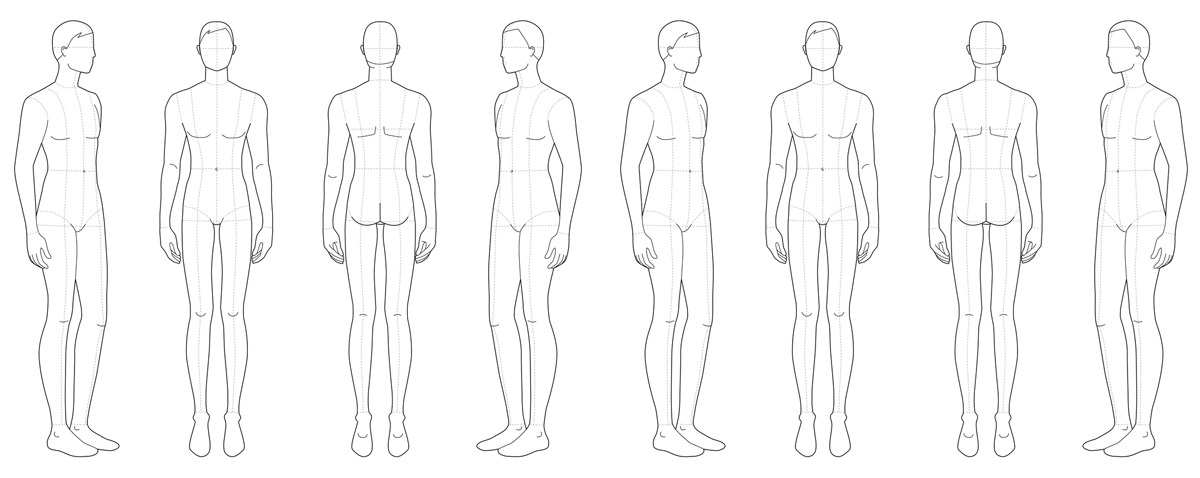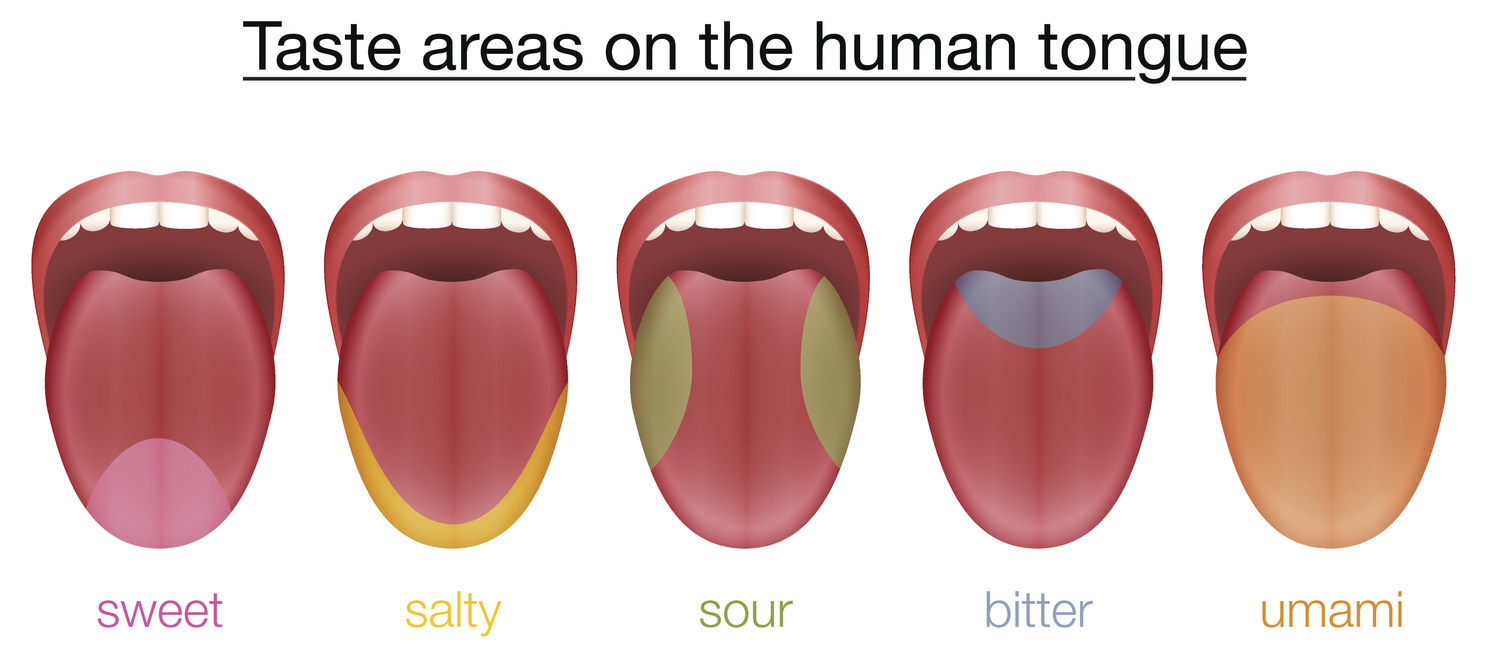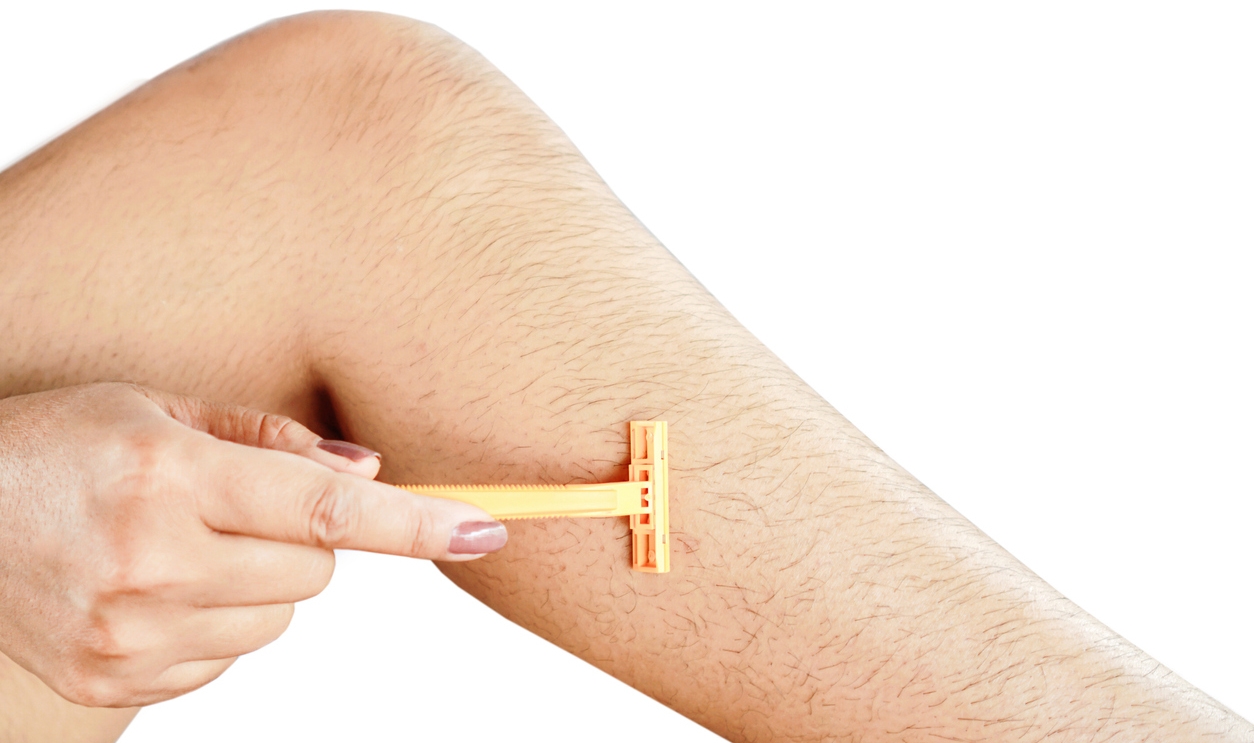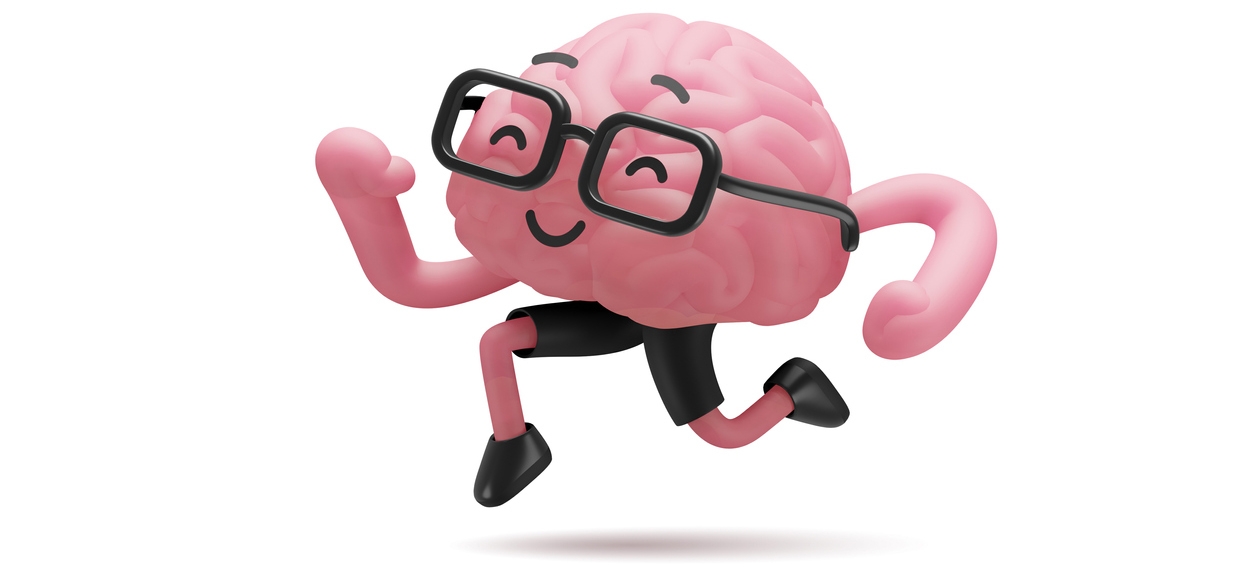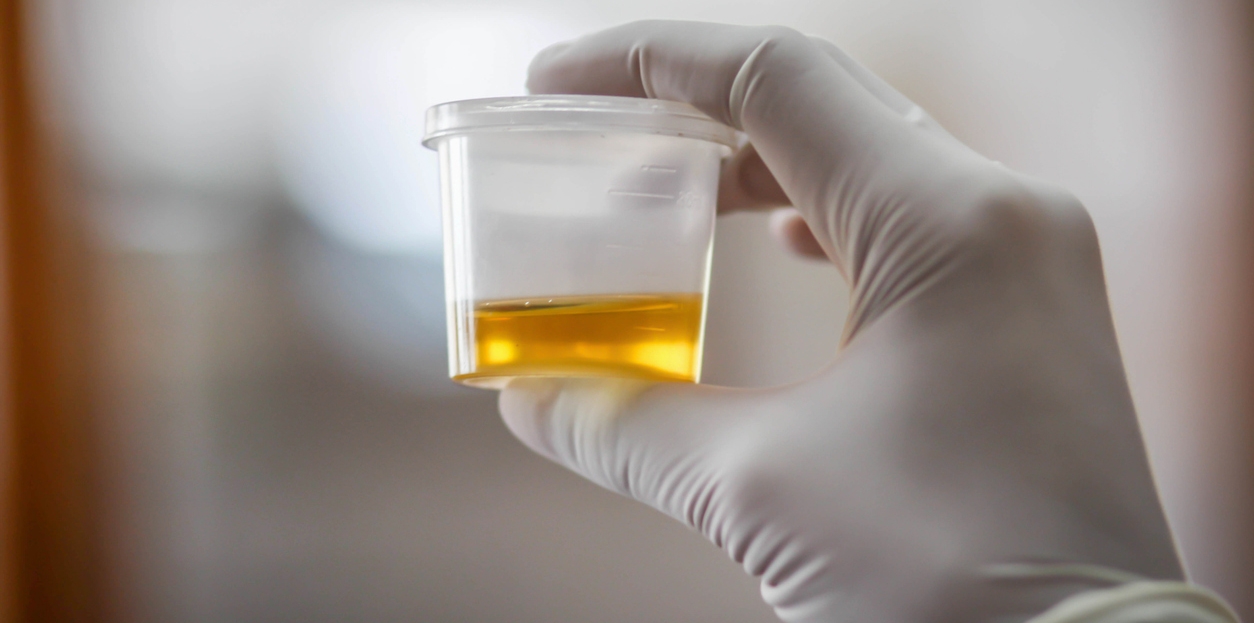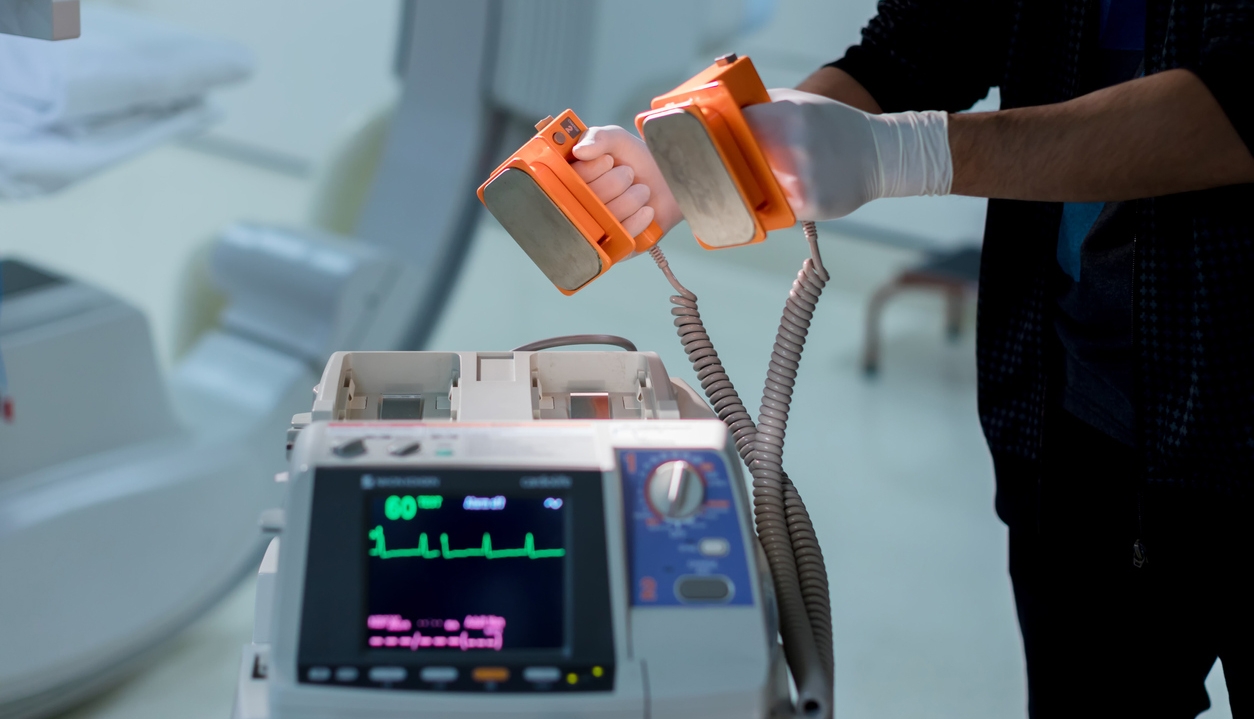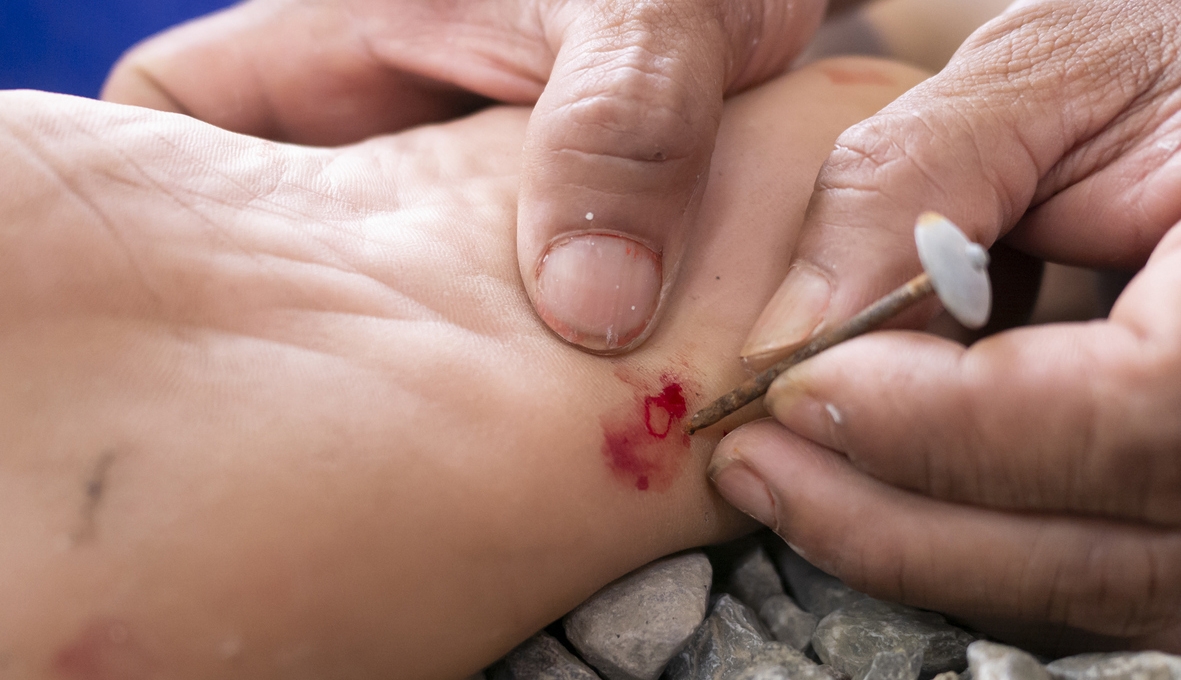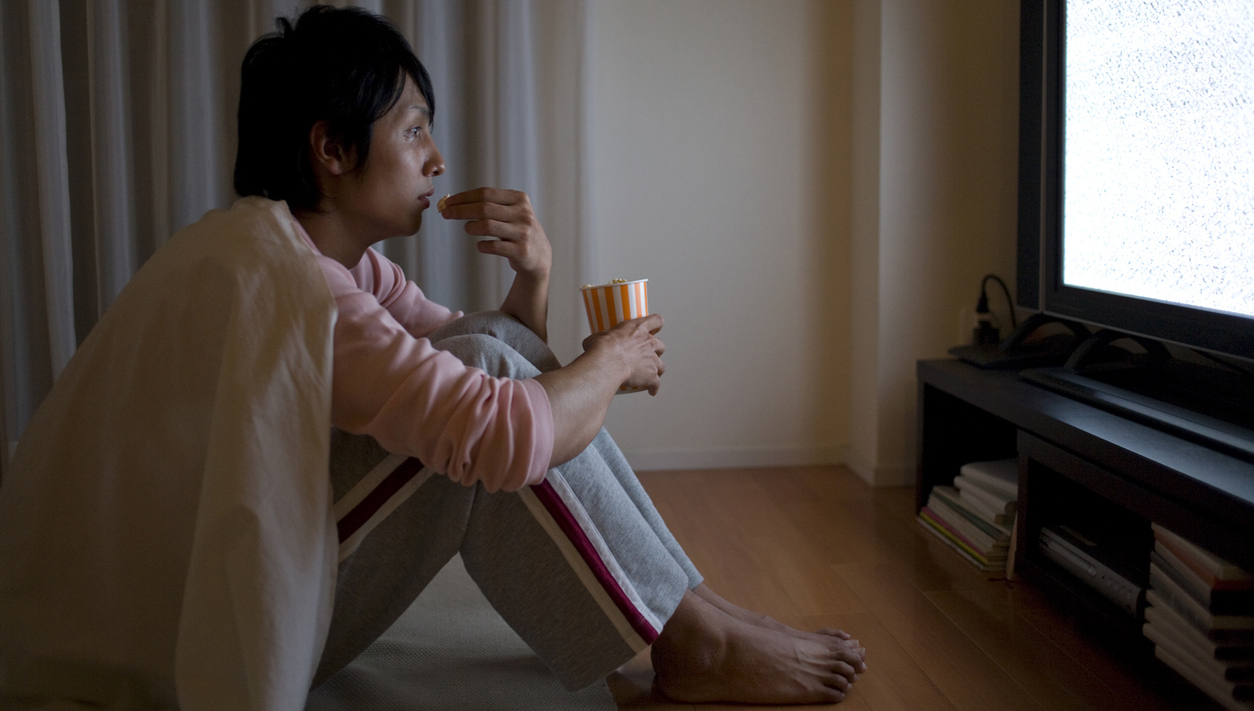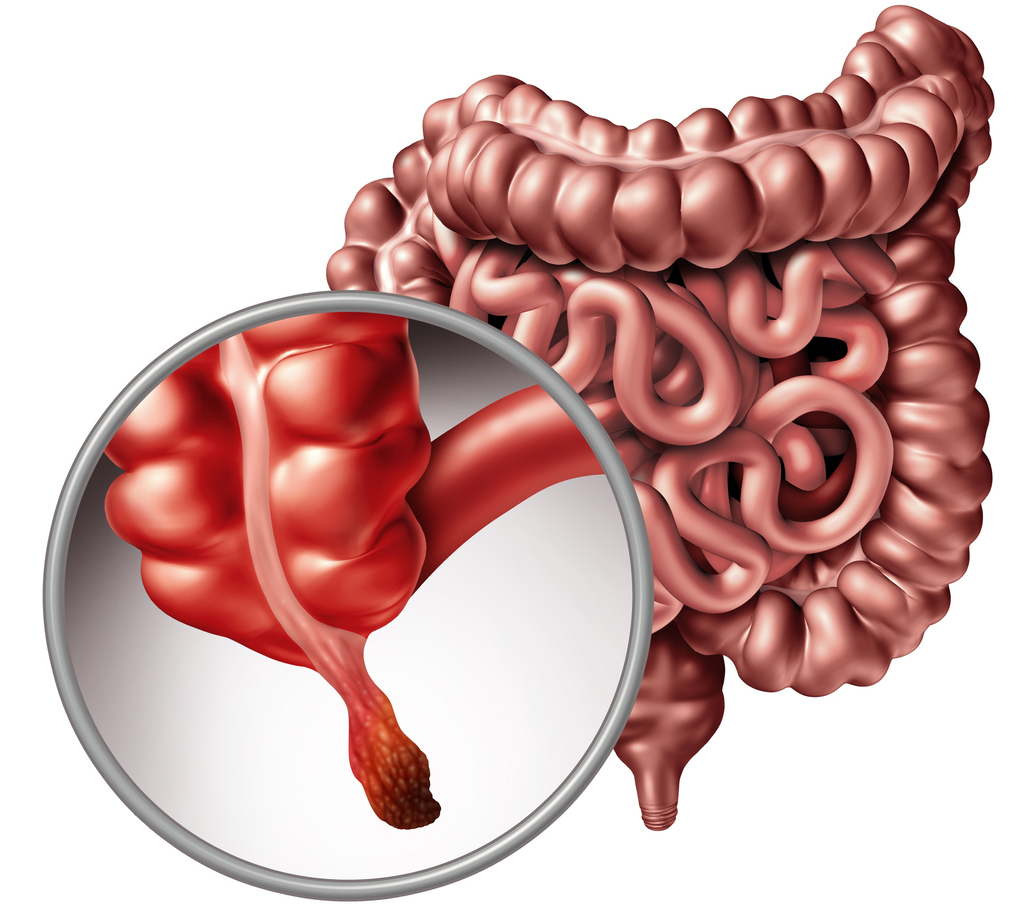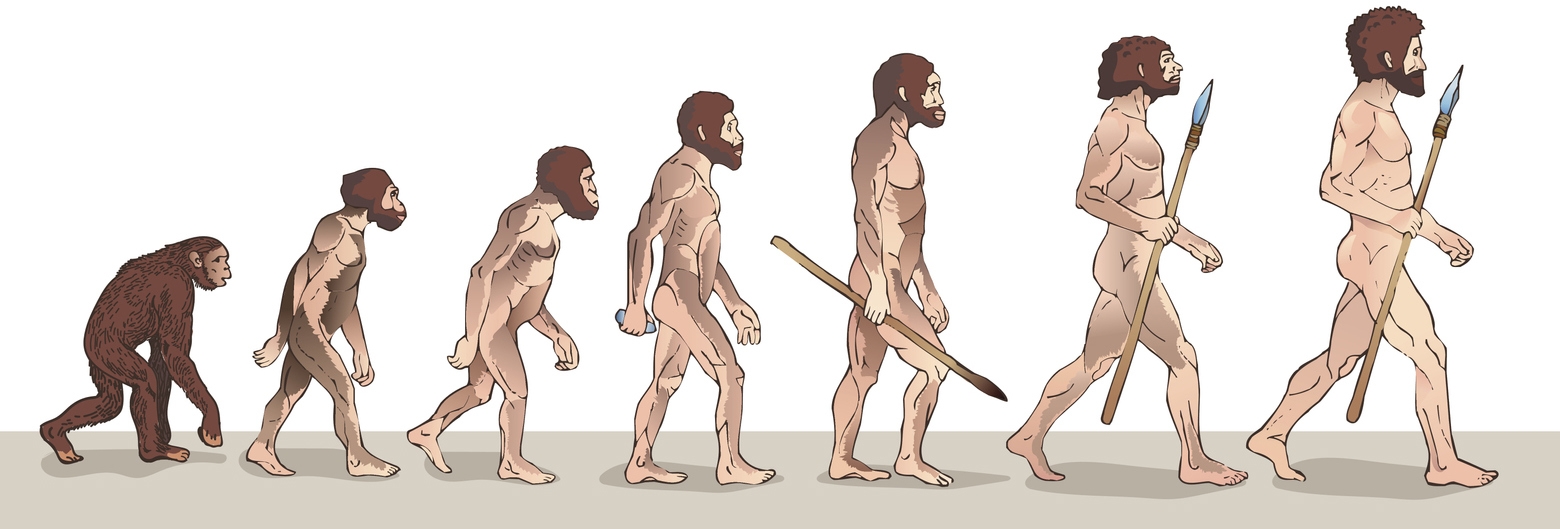Table of Contents
Background
The human body is amazing as it is a single structure that is made up of billions of smaller structures, such as cells, tissues, organs, and systems. There are lots of mind-blowing facts about the human body to learn about. For example, did you know that your body produces 25 million new cells every second? Or that more than half of your bones are located in the hands, wrists, feet, and ankles? Amazing, right?

a brain model

getting blood sample
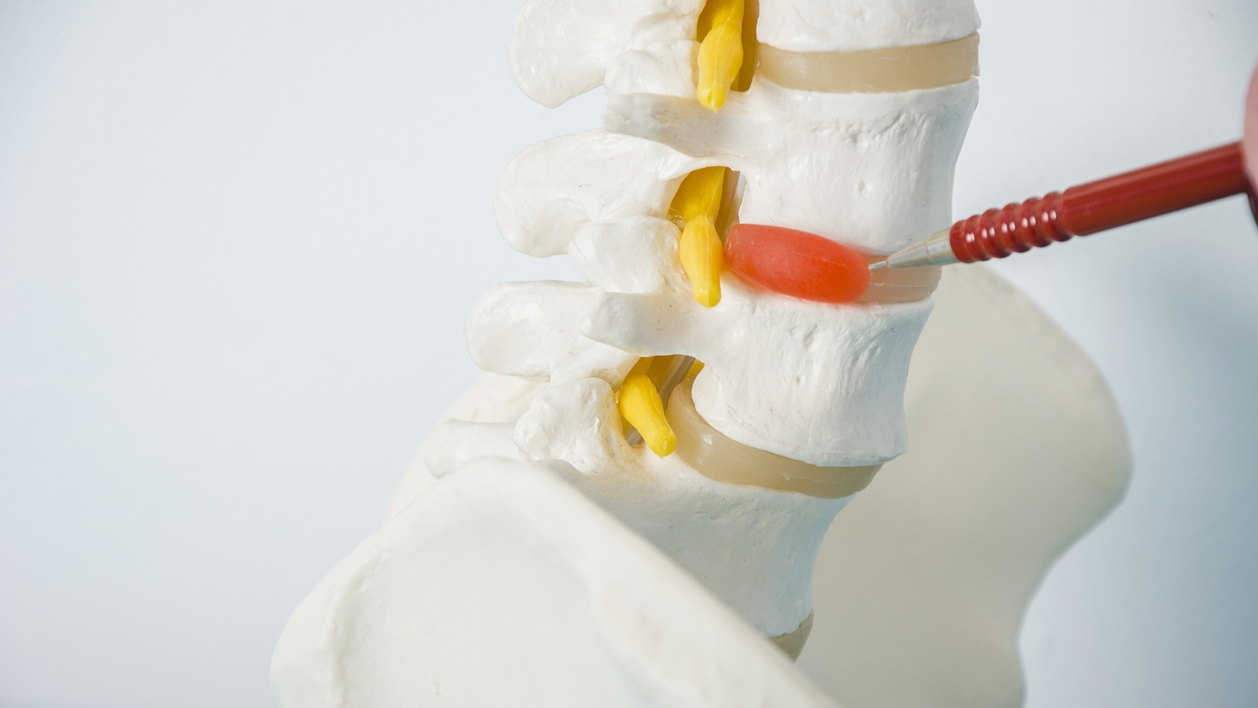
a skeletal model of herniated disc
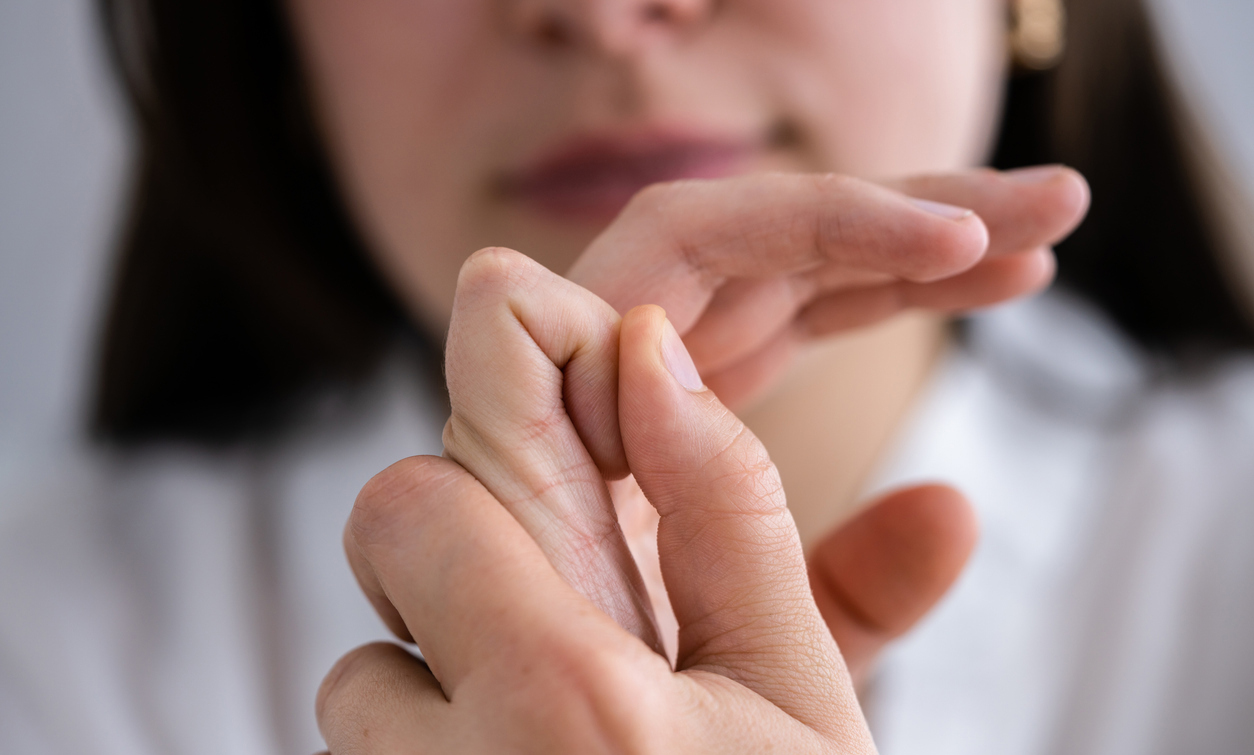
person cracking her knuckles
However, not all of the facts that we are taught about the human body are true. Even if many people believed them for so long, and some are even included in textbooks, there are information about the human body that are just myths and are not backed by any evidence. This is quite sad as a lot of people are being misinformed by these myths. That’s why, to help you get all the information right, we have gathered in this post some of the common human body myths that most people believe, along with explanations as to why they are just myths. Read on to learn the truth about these human body myths.
Myth #1: The tongue has specific regions for tasting sweet, sour, salty, and bitter flavors.
Most of us might have probably seen the tongue map or the diagram of the tongue divided into sections for different taste receptors. Sweet in the front, bitter at the back, and sweet and salty on the sides. It is probably what comes to your mind when it comes to the study of taste. However, this diagram is wrong.
The ability to taste different flavors is not sectioned off to various parts of the tongue. It’s because the receptors that pick up taste are distributed all over. The tongue map came from the 1901 study or paper by German scientist David Hanig. He set out to measure the thresholds for taste perception around the edges of the tongue by dripping stimuli corresponding to different tastes in intervals. In his study, he found out that the tip and edges of the tongue are sensitive to tastes. It proved that different parts of the tongue have a lower threshold for perceiving certain tastes, but the differences are small.
The problem with his findings was how he decided to illustrate it. Even with scientific evidence, the tongue map has burrowed its way into common knowledge. In fact, it is still being taught in many schools and textbooks today. [1]
Myth #2: Shaving your body hair will make it grow back thicker or darker.
This myth was debunked by clinical studies in 1928, but it still lives on even almost 100 years later. This may be due to the fact that the regrowth of hair after shaving usually has a different appearance. However, shaving your hair, no matter which part of your body, does not mean the hair will grow back thicker or darker.
Unshaven hair has a finer tip compared to regrown hair that has a coarser base, but the thinner part will eventually grow back if you let it get that far. Also, new hair may appear darker as it has not yet been exposed to elements, such as sun, soaps, and other chemicals that can lighten the hair. [2]
Myth #3: Fingernails and hair continue to grow after death.
When a person dies, different cells also die at different rates. After the heart stops beating, the supply of oxygen to the brain stops. Without glucose to depend on, nerve cells die within three to seven minutes. For fingernails to grow, new cells need to be produced, and this is impossible without glucose. A similar process happens for hair. New cells are responsible for making the hair strands grow longer. Therefore, why do myths persist about fingernails and hair continuing to grow after death?
Well, people who believe this myth has a biological basis. The fingernails are not growing, but rather, the skin around the nails retracts as it becomes dehydrated, which makes the nails appear longer. The same goes with hair. As the skin dries out, the hair appears more prominent. [3]
Myth #4: Cracking your knuckles will increase your chances of developing arthritis.
Cracking your knuckles may aggravate some people around you, but it does not raise your risk for arthritis. Several studies have compared the rates of hand arthritis among habitual knuckle-crackers and those who did not crack their knuckles, and they found no connection.
The “pop” you hear from a cracked knuckle is caused by bubbles bursting in the synovial fluid, which lubricates joints. However, even if it is proved by studies that knuckle-cracking will not increase your chances of developing arthritis, it is still better to let go of the habit as it may lead to reduced grip strength and possible injuries. [4]
Myth #5: Humans only have five senses.
The sense of sight, smell, taste, touch, and hearing are the five basic senses of humans. However, it is not true that these are all the senses that we have. This myth was instigated by Aristotle, who came up with this list as they are the senses that we can obviously see. However, aside from these, humans can sense all kinds of other things.
Humans have proprioception. It is an ability to sense where our body parts are. For instance, it is how you can touch your nose even when your eyes are closed or how you can keep your eye on a ball and still catch it with your hand. Also, our ears don’t just hear but also help with our sense of balance. Humans also have a thermoception or the sense of temperature. [5]
Myth #6: Only 10% of the human brain is being used.
This myth is rooted firmly in popular culture. It was the basis of the 2014 movie “Lucy,” which shows what would happen if a person actually used all 100% of her brain power. It has been used to justify belief in pseudoscientific psychic powers and is an implied assumption in many self-help programs that are made to “unleash” untapped human potential.
There are lots of articles and videos that debunk this myth, both in popular media and from neuroscientists. Based on MRI scans, even the simple activities that humans do require almost all of the brain to be active. There is still a lot more to learn about the human brain, but it is not true that only 10% of it is being used. [6]
Myth #7: Humans lose most of their body heat through their heads.
This myth probably came from experiments done in the 1950s when military researchers exposed subjects to frigid temperatures. While their bodies were bundled up, their heads were left exposed, and they were found to have lost more heat from their heads.
Scientists revisited the question in 2006. They tested subjects in cold water with and without wetsuits, sometimes with their heads out of the water and sometimes submerged. In this experiment, the scientists found that the head accounts for about 7% of the surface area of the body and the heat loss is fairly proportional to the amount of skin that is showing.
In 2008, another report said that a person loses 7% to 10% of their body heat through their head. This means that humans do not lose most of their body heat through their heads. [7]
Myth #8: Waking up a sleepwalker will kill them.
According to a popular myth, you should not wake up a sleepwalker because they will die. However, this is not true. According to Michael Salemi, the general manager of the California Center for Sleep Disorders, when you wake up a sleepwalker, it may distress them, but they will not die from shock. In fact, you can actually save a sleepwalker from danger by waking them up. Or, if you do not want to wake them up, you can just lead them back to their beds by the elbow. [8]
Myth #9: Urine is sterile.
There is a myth out there that says human urine is sterile. However, if drinking it is among your survivalist backup plan, we have some bad news for you. There is no truth behind this information. According to scientists, urine in healthy individuals naturally contains bacteria. Therefore, we can conclude that urine is not as clean as myths have led people to believe.
Some people say that urine is sterile as they may drink it in survival scenarios or for its rumored benefits. If it were, it would be less likely to make you sick. Urine has other components aside from being 95% water. It includes urea, chloride, sodium, potassium, waste products, and bacteria in varying amounts. Some may even have proteins, red blood cells, and glucose if a person has an underlying infection or medical condition. [9]
Myth #10: Creative people use the right half of their brain, while analytical people use the left half.
Many people believe that logical and precise thinkers use their left brains while free-spirited and artistic people use their right brains. However, the idea of right-brained and left-brained people is a myth. People obviously have different personalities and talents, and there is no reason to believe these differences. Recent research using brain imaging technology has not found any evidence of right or left dominance.
Many people believe this myth as it just makes instinctive sense that people’s brains would be leading on one side or the other, just as their hands, feet, or eyes are. It may also be related to people’s seemingly unlimited appetite for schemes that allow us to sort ourselves into types based on our emotional and intellectual characteristics. The myth is popular as it is something that gives people a scientific way to talk about their favorite subject, which is themselves. [10]
Myth #11: Shocking someone in asystole will get their heart beating again.
According to a popular myth, flatlining patients can be shocked back to life. Like what we see in movies, when the patient’s cardiac monitor flatlines, the doctor gets the defibrillator paddles and puts them on the chest of the unconscious patient. The patient gets a massive dose of electricity. His back curves, and his limp body lifts off the bed with the shock. Then, the waveform appears again on the monitor, and the patient wakes up. However, in reality, that is not how it works.
Pulseless electrical activity and asystole or flatlining are non-shockable. They do not respond to defibrillation. These rhythms show that the heart muscle itself is dysfunctional. The treatment of choice for asystole is to continue CPR and give a great dose of adrenaline. [11]
Myth #12: Rust can give humans tetanus.
Are you one of those who believe that tetanus is caused by stepping on a rusty nail? Well, it’s time to leave that belief behind as it is just a myth. Rust does not cause tetanus, but stepping on a nail might if you are not immunized. In fact, any damage to the skin, even blisters and burns allows tetanus-causing bacteria to enter the body.
Tetanus is not caused by rust but by a bacterium called Clostridium tetani. It is found worldwide in dust, soil, and the feces of man and animals. It is a powerful toxin that can travel to the brain and interfere with breathing control and other important body functions. [12]
Myth #13: Television screens are bad for the eyes.
Most children are told that watching too close to the TV or watching TV for a long period is bad for the eyes and can cause damage. But according to a group of ophthalmologists, television won’t cause any physical damage to the eyes. It is true that you may feel eye fatigue if you watch TV for several hours or if you sit very near to the screen. Eye Strain and fatigue are common after long periods of watching TV. However, your eyes will bounce back after a night or two of quality sleep. [13]
Myth #14: The disc in the spine can slip.
Have you ever heard of the term “slipped disc?” It pertains to the condition when a soft cushion of tissue between the bones in the spine pushes out. However, the truth is the disc in the spine can’t really slip.
The spine has 24 moveable vertebrae. These are separated from one another by shock absorbers called discs. The discs have soft inner parts surrounded by a fibrous coating. There are instances when the coating gets torn, allowing the softer material to bulge out, which is excruciating. It is commonly called “slipped disc,” but the term is misleading. It’s because discs are tightly attached to the vertebrae and can’t slip in any way. The correct medical terminology for this condition is spinal disc herniation. [14]
Myth #15: The appendix has no known function.
The human appendix is a narrow pouch that projects off the cecum in the digestive system. This body organ has a notorious reputation for its tendency to become inflamed, which often results in surgical removal. That is why based on myths, the appendix has no known function. However, according to recent research, the appendix may serve an important purpose in the body. The appendix is actually a reservoir for beneficial gut bacteria. The microbes that help humans fight disease are stored in the appendix and are deployed when illness strikes the body. [15]
Myth #16: You will catch a cold if you go out in the rain.
A lot of people believe that getting out in the rain will let them catch a cold. However, it is actually just a myth. It’s because the cold is caused by a virus, which is not influenced by rain. But there are certain cold viruses that spread more easily when it is cold as they function better at low temperatures. This means that cold weather correlates with colds, but rain can’t cause humans to catch a cold. [16]
Myth #17: Humans need to drink eight glasses of water every day.
You have probably heard the advice that eight glasses of water are needed each day. That is a reasonable goal. However, it is also quite wrong. It is quite challenging to pinpoint where exactly the “eight glasses a day” rule came from. In order to stay hydrated, you don’t actually need to follow this rule. You just have to follow your thirst.
Also, take note that it is not just plain water that supplies the body with water. Even foods like fruits, vegetables, and drinks like milk and fruit juice also contain water. Also, small amounts of water are produced within the body when you metabolize nutrients. Therefore, even if you don’t drink eight glasses of water per day, you can still achieve the daily recommended amount of water that the body needs through the foods that you eat and other beverages that you drink. [17]
Myth #18: Deoxygenated blood is blue.
There is a popular myth that says deoxygenated blood is blue. Even veins appear blue through the skin. There are also some sources that state that blood from a cut starts out blue and turns red upon contact with oxygen. However, unless you are a horseshoe crab or an octopus, your blood is red and not blue. The blood is always red, and the veins appear blue on the skin due to the way the skin and veins absorb and reflect different light wavelengths. [18]
Myth #19: Humans evolved from chimps or monkeys.
According to a popular myth, humans evolved directly from chimpanzees and monkeys. While evolution is real, people have a lot of misconceptions about how it works. It is not true that we evolved from chimps and monkeys. The truth is that humans and other apes share a common ancestor that lived around 7 million years ago. However, something changed to make it evolve into two separate ancestries. One ancestry became chimps, gorillas, and bonobos, while the other ancestry became hominids, thus humans. [5]
Myth #20: The ability to roll or curl your tongue is genetic.
There is also a myth that says the ability to roll or curl your tongue is genetic. Whether or not you can do it, this ability is not from a single gene. This myth came from a 1940 paper published by a geneticist stating that the tongue rolling ability came from a dominant gene. However, it was disproved by another scientist in 1952. He studied seven pairs of identical twins in which one could roll his tongue and the other could not.
Even though the original geneticist acknowledged his mistake, the myth still lived on. In fact, it is still being taught in schools and science textbooks. What do you think gives people the ability to roll or curl their tongues? It might be multiple genes, but it is possible for some people to practice and learn the trick. [5]
Conclusion
These are some of the common human body myths most people believe. If you’ve believed some of these myths too, now you know the truth behind them, which can help stop the spread of misinformation. There are indeed a lot of things to learn about the human body. However, it is also important to be careful and to learn how to do proper research in order to get the right information and not be misled by myths like the ones we’ve shared in this post.
References
[1] Magazine, S. (2017, May 23). The taste map of the tongue you learned in school is all wrong. Smithsonian.com. Retrieved July 27, 2022, from https://www.smithsonianmag.com/science-nature/neat-and-tidy-map-tastes-tongue-you-learned-school-all-wrong-180963407/
[2] Cherney, K. (2019, December 4). Does shaving make hair thicker or faster? myths and facts. Healthline. Retrieved July 27, 2022, from https://www.healthline.com/health/does-shaving-make-hair-thicker#how-hair-grows
[3] Hammond, C. (2013, May 28). Do your hair and fingernails grow after death? BBC Future. Retrieved July 27, 2022, from https://www.bbc.com/future/article/20130526-do-your-nails-grow-after-death
[4] Harvard Health, P. (2020, July 6). Does cracking knuckles cause arthritis? Harvard Health. Retrieved July 27, 2022, from https://www.health.harvard.edu/pain/does-knuckle-cracking-cause-arthritis
[5] Science 101, E. (2020, November 3). 25 myths about the human body – debunked! Science 101. Retrieved July 27, 2022, from https://www.science101.com/25-myths-about-the-human-body-debunked/
[6] Chew, S. L. (2018, August 29). Myth: We only use 10% of our brains. Association for Psychological Science – APS. Retrieved July 27, 2022, from https://www.psychologicalscience.org/teaching/myth-we-only-use-10-of-our-brains.html
[7] Gammon, K. (2013, February 1). Do we really lose half our body heat from our heads? LiveScience. Retrieved July 27, 2022, from https://www.livescience.com/34411-body-heat-loss-head.html
[8] Boyd, R. (2007, April 5). Fact or fiction? Waking a Sleepwalker may kill them. Scientific American. Retrieved July 27, 2022, from https://www.scientificamerican.com/article/waking-a-sleepwalker-may-kill-them/
[9] Nall, R. (2021, January 8). Is urine sterile? what the research says. Healthline. Retrieved July 27, 2022, from https://www.healthline.com/health/is-urine-sterile#other-misconceptions
[10] The Editors of Encyclopaedia Britannica. (n.d.). Are there really right-brained and left-brained people? Encyclopædia Britannica. Retrieved July 27, 2022, from https://www.britannica.com/story/are-there-really-right-brained-and-left-brained-people
[11] Vagg, M. (2022, July 21). Monday’s medical myth: Flatlining patients can be shocked back to life. The Conversation. Retrieved July 27, 2022, from https://theconversation.com/mondays-medical-myth-flatlining-patients-can-be-shocked-back-to-life-13662
[12] Johnson, A. (1997, April 10). Tetanus – Are You at Risk? Tetanus – are you at risk? Retrieved July 27, 2022, from https://www.ndhealth.gov/Publications/prevent/tetanus/tetanus.htm
[13] Eye Consultants of Atlanta, E. (2021, June 11). Can TV damage your eyesight? Eye Consultants of Atlanta. Retrieved July 27, 2022, from https://www.eyeconsultants.net/can-tv-damage-your-eyesight.htm
[14] Brown, M. (2018, August 20). 20 ‘facts’ about the human body that are complete myths. Daily Mail Online. Retrieved July 27, 2022, from https://www.dailymail.co.uk/health/article-6080127/20-facts-human-body-complete-myths.html
[15] Midwestern University. (2017, January 9). Appendix may have important function, new research suggests. ScienceDaily. Retrieved July 27, 2022, from https://www.sciencedaily.com/releases/2017/01/170109162333.htm
[16] Thiagarajan, S. (2019, March 28). CATCHING A COLD FROM THE RAIN. Think twice. Retrieved July 27, 2022, from https://sites.utexas.edu/think-twice/2019/03/28/catching-a-cold-from-the-rain/
[17] Palsdottir, H. (2016, November 8). Drink 8 glasses of water a day: Fact or fiction? Healthline. Retrieved July 27, 2022, from https://www.healthline.com/nutrition/8-glasses-of-water-per-day#TOC_TITLE_HDR_4
[18] ASTC Science World Society, E. (2015, December 10). Is blood really blue? Science World. Retrieved July 27, 2022, from https://www.scienceworld.ca/stories/blood-really-blue/

